12 Birds That Sing At Night in the US
Last Updated on
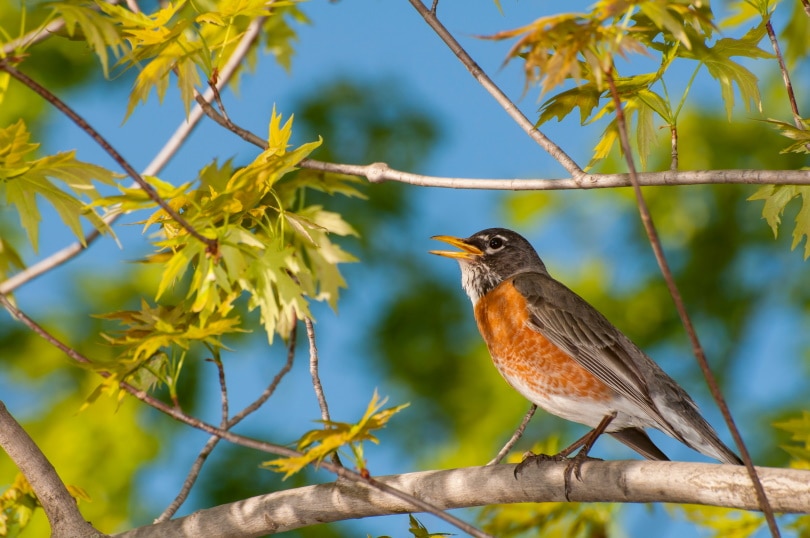
It’s no secret that many animals emit sounds specific to certain times of the day or year. For example, you’re probably familiar with the loud chirping of crickets in the summertime. There are many different bird species that can be found in the United States, and each one has its own unique song. But did you know that some birds sing at night?
In the United States, there are several species of birds that can be heard singing long after the sun has set. While many people think of birds as being strictly daylight animals, there are actually quite a few species of birds that sing in the dark. These nocturnal birds can be found in a variety of habitats, from forests to deserts to urban areas. These nighttime singers may not be as well-known as their daytime counterparts, but they’re definitely worth a closer listen. Read on to find out about 12 of these talented nighttime performers.

The 12 Birds That Sing At Night in the US
1. Yellow-Breasted Chat

The Yellow-Breasted Chat is a passerine bird found in the eastern United States and Canada. It is a sexually dimorphic species, with males having brighter plumage than females. They typically inhabit open areas near water, such as meadows, marshes, and prairies.
It is a medium-sized bird that has a length of about 10 inches and a wingspan of about 16 inches. The male has a bright yellow breast and throat, while the female has a paler chest. These birds are known for their loud, warbling songs, which can be heard from a great distance.
2. Hermit Thrush
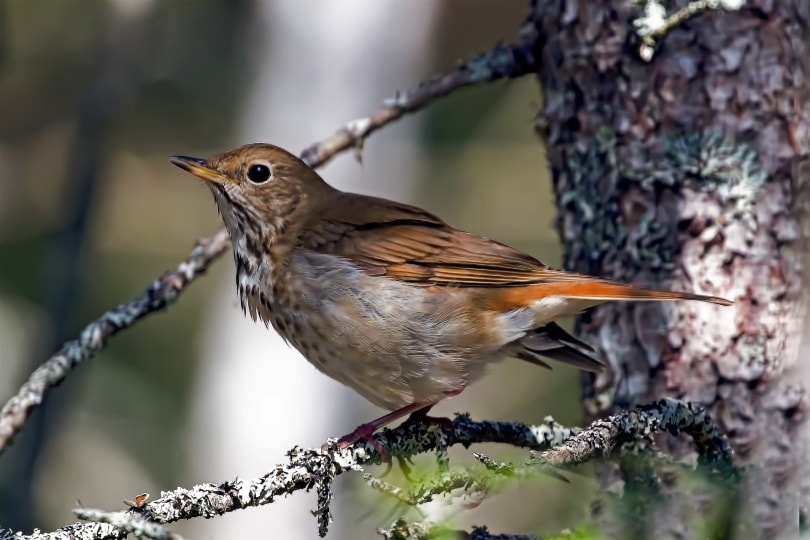
The Hermit Thrush is a migratory songbird that breeds in North America and winters in Central and South America. It is a member of the thrush family and is the largest thrush in North America. The hermit thrush is named for its habit of spending most of its time alone, away from other birds and roosting in secluded areas.
As a shy and retiring bird, it can be difficult for birders to observe. Hermit thrushes are brown with a pale throat and breast, and they have a thin black stripe through their eyes. They are the smallest thrush in North America, and typically weigh between 23 and 29 grams.
3. Black-Crowned Night Heron
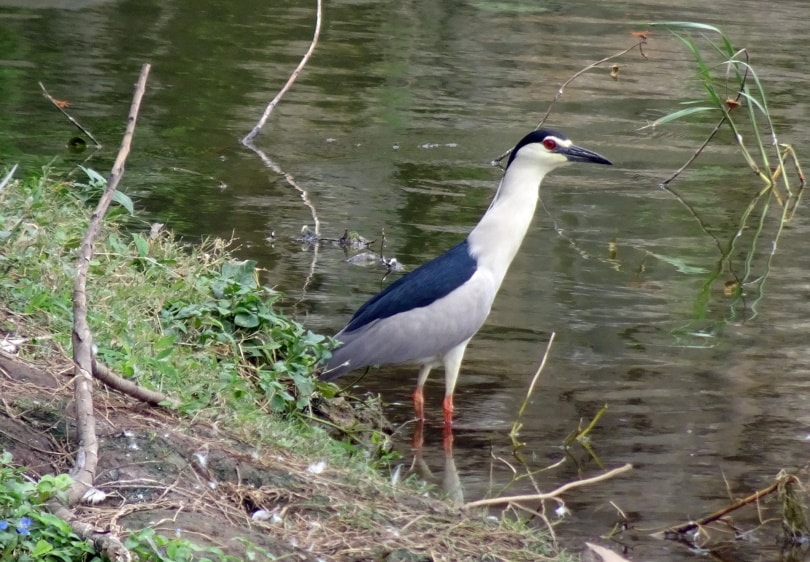
The Black-Crowned Night Heron is a medium-sized heron found worldwide, including North and South America, Europe, Africa, and Asia. They are mostly nocturnal, and most commonly found near water, where they feed on small fish, amphibians, and invertebrates. During the day they can be found perched in trees or on the ground, often near rivers, lakes, marshes, and estuaries.
They are easily recognizable by their black crown and white throat. They are usually shy and secretive birds, but during the breeding season, they can be quite vocal, making a variety of croaking noises.
4. American Robin
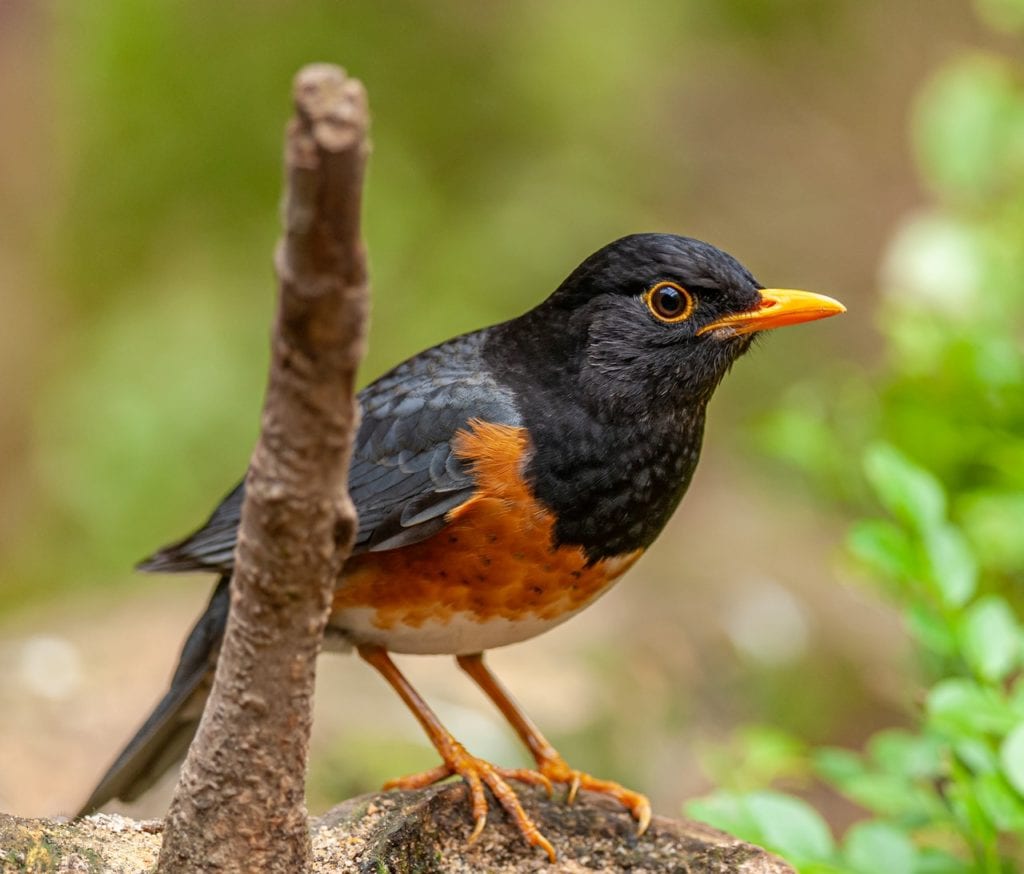
The American Robin is a migratory songbird that is widely distributed throughout the eastern and central United States. It is the state bird of Connecticut, Michigan, and Wisconsin. They are bigger than the European Robin, usually around 10–12 inches in length, and have a wingspan of about 20 inches.
American Robins are usually a dark brown or red color, with a white belly. They feed mainly on insects but also eat fruit and seeds. They are known for their sweet song, which they sing year-round. American Robins eat a variety of things, including insects, fruit, and seeds.
5. Common Loon

The Common Loon is a large waterbird found in North America and is the state bird of Minnesota. It has a black and white body and a long neck. The Common Loon is a skilled swimmer and diver and can stay underwater for up to 30 minutes, where they feed on fish and other aquatic creatures.
Common Loons nest on the ground, and the female typically lays two eggs. The young hatch after about 28 days and are able to fly within a few weeks. These birds are known for their unique calls, which can be heard from a great distance.
6. Common Nightingale

The Common Nightingale is a small passerine bird that is found in Europe, western Asia, and North Africa. It is a migratory species, and winters in tropical Africa. They are known for their beautiful song, which has been described as one of the most complex and beautiful in the world. They are monogamous birds and both parents care for the chicks. The Common Nightingale is also known for its intelligence and ability to learn new songs.
7. Eastern Whip-Poor-Williams
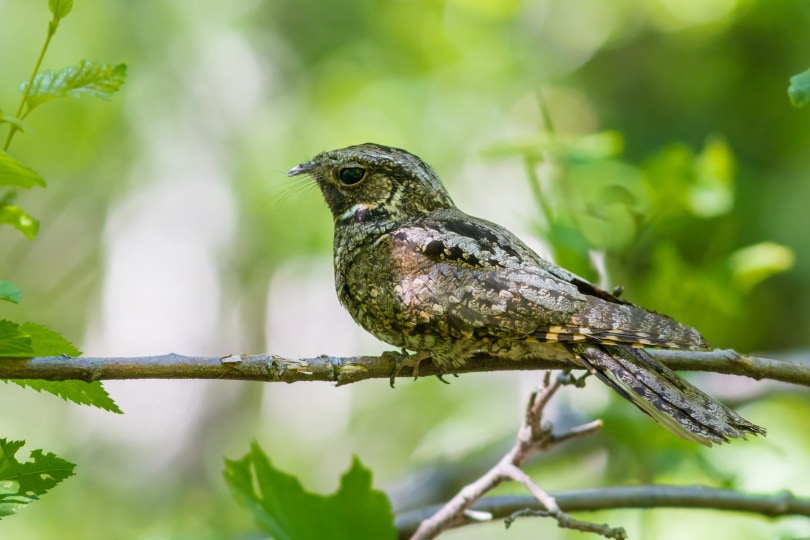
The Eastern Whip-Poor-Williams is a type of nocturnal bird found in eastern North America. They are a member of the nightjar family and are characterized by their dark brown almost black plumage, white throat and chest, white patches on their wing, and long tails.
The Whip-Poor-Will is a nighttime bird species that typically hunt insects in open areas, such as meadows and fields and are named for the sound they make, which is similar to the words “whip” and “poor”. Whip-poor-wills are monogamous and prefer to nest in wooded areas where the female will build a nest of leaves and grasses in a tree or shrub.
8. Northern Mockingbirds
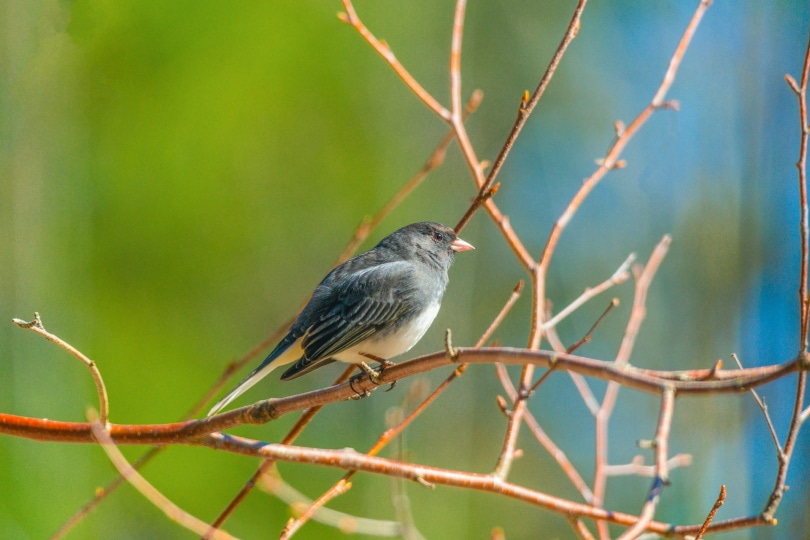
Northern Mockingbirds are a species of bird found in North America known for their ability to mimic the sounds of other animals and birds, and they are often used as a means of identification by birders. Northern Mockingbirds are also known for their aggressive behavior towards other birds, and they are one of the few bird species that will attack hawks.
9. Killdeer

Killdeer are only found in North America, easily recognizable by their distinctive black and white bands on their wings which help to camouflage them from predators. Killdeer are known for their loud, territorial call, which they use to warn other birds of danger, as well as their habit of pretending to be injured in order to lure predators away from their nests. Killdeer can be found in open fields and near water, and they often nest on the ground. They are considered to be a beneficial species because they help to control pests.
10. Barn Owl
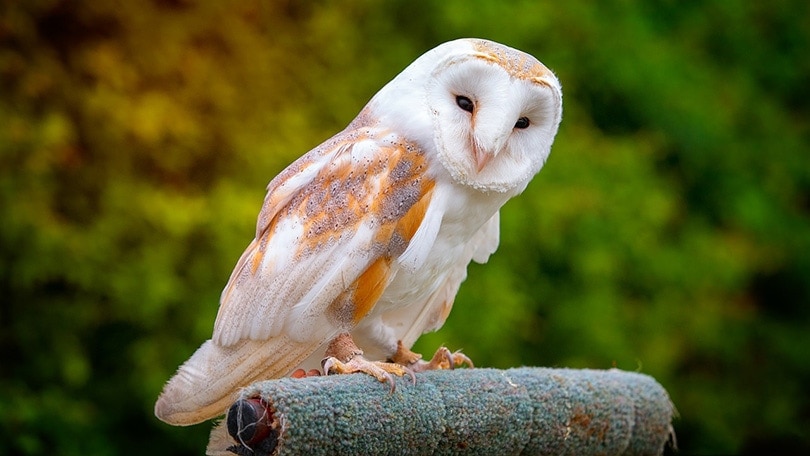
The Barn Owl is a common raptor found throughout most of the United States. They are usually around 18 inches in length and have a wingspan of around 40 inches. The Barn Owl is mostly white with some brown spots on its wing with a distinctive heart-shaped face. They catch their prey by swooping down onto them from above.
These owls are usually nocturnal but can sometimes be seen during the day. Barn owls feed primarily on small mammals such as mice, rats, and rabbits. They have excellent hearing and can locate their prey in complete darkness. Barn owls are cavity nesters—meaning they build their nests inside tree cavities, old buildings, or caves.
11. Barred Owl
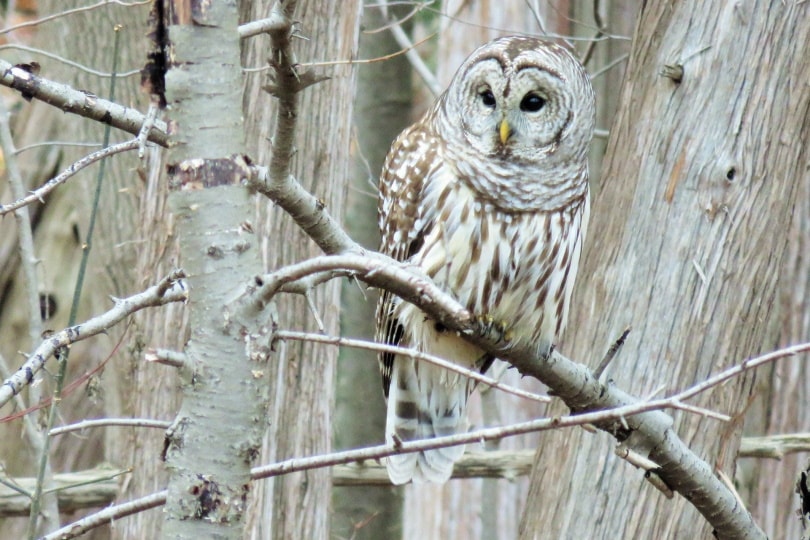
The Barred Owl is a large, brown, North American owl that is easily identified by its barred plumage. This owl prefers woodlands and is often found near water. The Barred Owl feeds mainly on small mammals but also eats birds, insects, and reptiles. This owl is generally nocturnal but can also be seen during the day at times.
It is one of the most common owls in North America and is a nocturnal predator with a strong, hooked beak that it uses to tear apart its prey. The barred owl nests in tree cavities and lays 2–4 eggs at a time.
12. Black Rail

The Black Rail is a small, secretive bird that is found in coastal marshes, wet meadows, and estuaries in the eastern United States. They are shy and difficult to see, and they prefer to stay hidden in dense vegetation. They are one of the most elusive birds in North America. They are very small, with a body length of only 5–6 inches and a weight of only 2–3 ounces.
They have a long, slender bill, short, black wings, and a long, thin tail and their plumage is mostly black except for a white stripe over the eye. They are most easily identified by their loud, distinctive call, which sounds like a high-pitched whistle.

What Time Do Birds Usually Go to Sleep?
Different bird species have different sleep habits. Some birds, like the Common Raven, will sleep in short bursts throughout the day while other birds, like the Great Horned Owl, will sleep for most of the day and night.
Some birds, such as the Common Swift, sleep while flying! It is generally accepted that many birds go to sleep when it gets dark outside, but there is still much research that needs to be conducted in order to understand the intricacies of avian sleep behavior.
Why Do Birds Chirp At Night?
Birds sing for a variety of reasons, including attracting a mate, defending their territory, or announcing their presence. Many bird species sing primarily during the day, but some (especially those that are nocturnal) sing at night as well. Nighttime singing may be used to communicate with other birds that are also up and about at night or to let potential predators know that the singer is aware of their presence and is not an easy target.


In Conclusion
Many bird species have evolved to take advantage of the cover of night. The benefits of nocturnal activity include avoiding predators, finding food, and establishing territory. The songs of night birds are beautiful, mysterious, and add to the serenity of the night.
While their songs can be soothing for many, some people may be disturbed by the singing and chirping birds keeping them up at night and may need to keep their windows closed when they’re trying to sleep! Nevertheless, it is fascinating to consider the adaptations that allow these marvelous creatures to thrive in the dark.
Image Credit: Michael Siluk, Shutterstock
About the Author Robert Sparks
Robert’s obsession with all things optical started early in life, when his optician father would bring home prototypes for Robert to play with. Nowadays, Robert is dedicated to helping others find the right optics for their needs. His hobbies include astronomy, astrophysics, and model building. Originally from Newark, NJ, he resides in Santa Fe, New Mexico, where the nighttime skies are filled with glittering stars.
Related Articles:
Can You Use Binoculars to Look At Stars? How to Choose the Right Pair
10 Types of Hummingbirds in Arkansas (With Pictures)
8 Types of Hummingbirds in Nebraska (With Pictures)
5 Types of Hummingbirds in Idaho (With Pictures)
3 Types of Hummingbirds in Mississippi (With Pictures)
8 Types of Hummingbirds in Kansas (With Pictures)
5 Types of Hummingbirds in West Virginia (With Pictures)
5 Types of Hummingbirds in Ohio (With Pictures)
